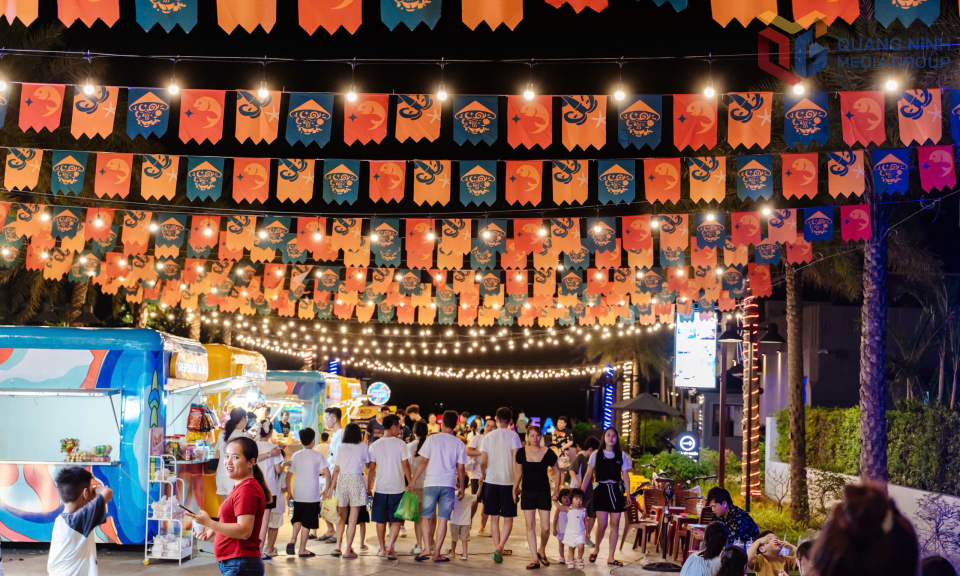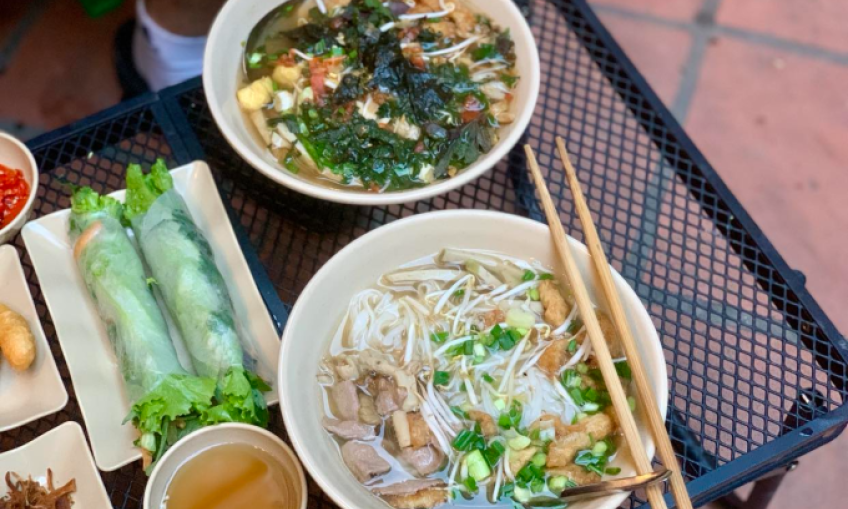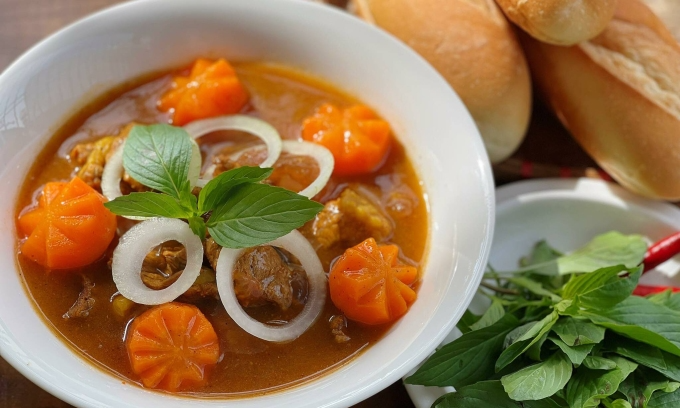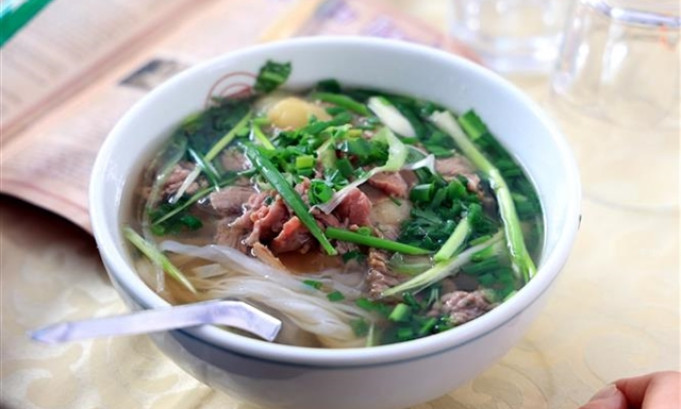Beyond borders: the global rise of Vietnamese street food
Vietnamese expats are introducing global travelers to popular street foods such as vermicelli with fermented shrimp paste, sugarcane juice and salt coffee, receiving a positive reception.
Here are four Vietnamese food spots abroad that have attracted attention, as featured on social media.
Vermicelli with fried tofu and fermented shrimp paste in New York
Mam NYC, a restaurant specializing in bun dau mam tom - vermicelli with fried tofu and fermented shrimp paste - was opened by Nhung Dao and her American chef husband, Jerald Head, in 2020 in Manhattan.
What started as a small pop-up shop has grown into a restaurant in one of America's busiest areas.
In 2023, Mam NYC was ranked 26th on the New York Times' list of the 100 best restaurants in New York City.
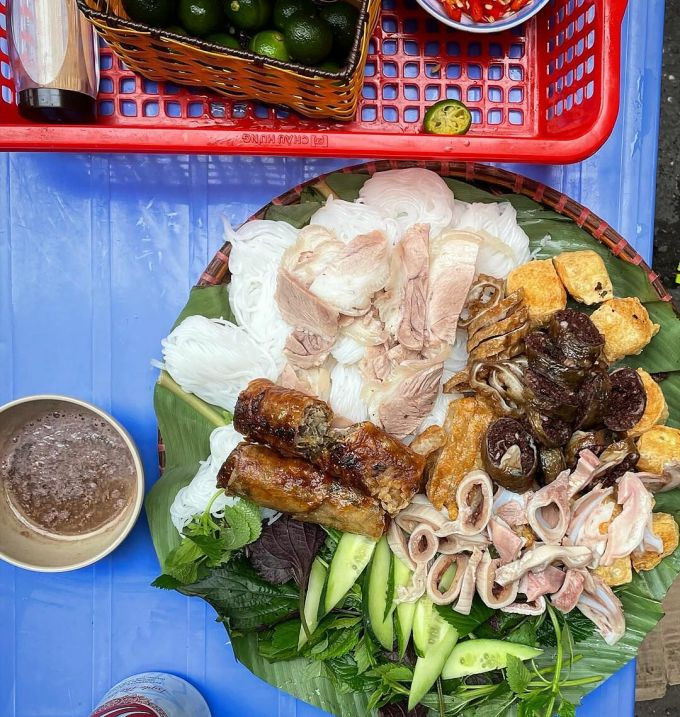
The restaurant features both indoor seating and a row of blue plastic tables and chairs on the sidewalk, reminiscent of street food spots in Vietnam. The food is served on a bamboo tray lined with banana leaves. A special platter costs $32 and includes vermicelli, fried tofu, green sticky rice patties, grilled pork intestines, boiled pork, and shrimp paste, accompanied by herbs. The shrimp paste is mixed with sugar, lime juice, and Thai chili.
Jerald said the small scale of the restaurant often leads to it being overwhelmed with customers, sometimes turning them away when it runs out of food. Customers typically have to book in advance and wait at least 30 minutes outside. The restaurant sells about 100 mixed platters and 30 kilograms of fresh tofu daily.
Many Americans visit Mam NYC to try this dish. For first-timers, the owners explain that the pungent shrimp paste is "the soul of the dish."
Sugarcane juice in Cheongju, South Korea
A sugarcane juice cart went viral on social media thanks to a TikTok video showing people lining up to buy the drink in Korea, garnering nearly three million views.
The owner, Huynh Chon Phuong, 33, is originally from Ca Mau Province in southern Vietnam.
Phuong said the video causing a social media stir was posted in 2023. The sugarcane juice cart, a side business, received overwhelming support, surprising Phuong.
Each glass of sugarcane juice costs 5,000 won (US$3.60). Due to Korea's climate, sugarcane is hard to grow, so Phuong imports it from Vietnam at about VND40,000 ($1.60) per kilogram.
The cart crushes over 400 kilograms of sugarcane daily, peaking at over 600 kilograms. This popular drink attracts both Korean and Vietnamese customers.
Salt coffee in Finland
Three Vietnamese students in Finland - Na Uy, Phung Gia Phut, and Pham Minh Quan - started a salt coffee cart in October 2023.
Na Uy noticed that locals in Finland preferred coffee but only had access to bottled or machine-brewed varieties, which lacked flavor. He believed introducing Vietnamese coffee would be a hit.

With three coffee filters brought from Vietnam, coffee bought from an Asian market, old furniture from storage, and handmade signs in Finnish, English, and Vietnamese, the trio set up their cart in front of a supermarket 500 meters from home.
Initially, the cart attracted just 6-7 customers a day. Within two weeks, it had regular patrons, and the cart became a social media sensation, selling 30 cups daily.
Now, the cart serves about 40 cups on peak days, exceeding initial expectations. They operate from 11 a.m. to 3 p.m. when foot traffic is highest. A cup of salt coffee costs VND53,000 (US$2), milk coffee VND47,000, and black coffee VND39,000.
Banh mi in Japan
Nguyen Huy Phuoc, 35, from Da Nang in central Vietnam, began his banh mi business in Tokyo's suburbs in 2018. Over six years, he and his wife expanded their mobile sandwich carts to eight cities across Japan.
In an August 2023 interview, Phuoc recalled early days when customers would come just to take a look then leave, forcing him and his wife to eat banh mi for meals. Five years later, they sometimes sell 1,000 sandwiches a day.
Phuoc chose to sell Vietnamese-style sandwiches for their convenience, allowing customers to grab and go. With an initial investment of about VND215 million ($8,500), he had an old truck converted into a food cart and secured selling spots.
Phuoc notes that each Japanese city has specific business permits and food safety regulations, requiring several months of preparation.

Besides fresh ingredients like chicken, pork, and liver, most spices are imported from Vietnam. Finding a bakery for Vietnamese-style banh mi in Japan was also challenging, as Japanese bread is typically harder and denser. The sandwich fillings were adjusted to suit the local palate, favoring sweet and light flavors.
Initially, the cart sold 20-30 sandwiches daily. Now, it averages 50-60. Each cart operates only during lunch hours and also offers rice dishes with similar toppings.

